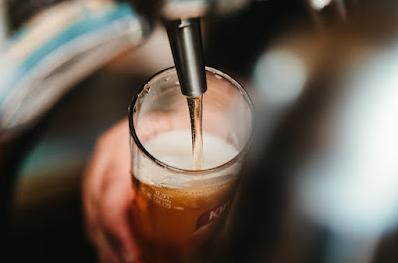Homebrewers have a wealth of information available, but one often overlooked technique is pressure fermenting.
Commercial brewers have used pressure fermenting for decades, but homebrewers are now taking advantage of this technique to achieve better-tasting beer in less time.
Pressure fermenting creates the perfect craft beer quickly and easily, and with FarmSteady’s kits make it even simpler. These complete brewing systems are designed to create delicious craft beers in as little as two weeks when using the pressure fermentation process.
The kits provide all the equipment needed, including an adjustable valve that can be used to increase or decrease pressure, a temperature control system to ensure accuracy and consistency, and easy-to-follow directions that make producing high-quality beer simple and enjoyable.

With FarmSteady’s all-in-one kits, you can experience the satisfaction of making your beer without having to fuss over-complicated recipes or processes – just set it up and sit back as fermentation does its work!
What Is Pressure Fermentation?
Fermenting under pressure in an airtight container at higher than atmospheric pressures (one atmosphere or 14.7 psi). Pressure fermentation refers to beer that is fermented under a pressure that is higher than atmospheric pressure.
In pressurized fermentation, the fermenter is sealed, trapping the CO2 created throughout the fermentation process. This higher-pressure environment encourages yeast growth activity and can produce a variety of unique flavors in your final product.
Pressure-fermented beer usually has a higher carbonation level than traditionally fermented beer and can have a more intense hop character. It also allows brewers to reduce their fermentation time significantly, sometimes as much as half the time!
The process allows homebrewers to maintain higher temperatures inside the vessel during fermentation and increases alcohol content due to the increased CO2 levels. This process is beneficial for making lager yeasts, which require colder temperatures for fermentation. It can also be used for ales and other styles of beer.
Why Use Pressure Fermenting?
The benefits of fermentation pressure are numerous.
- For starters, the process allows brewers to control the carbonation levels more precisely than traditional methods. This means you can create more consistent results each time you brew a batch of beer.
- Additionally, the higher-pressure environment encourages faster yeast activity, resulting in shorter fermentation times (as little as two days!).
- Finally, pressure fermentation also imparts unique flavor profiles incompatible with other methods. Many brewers report that their beers brewed via pressure fermenting have a much fuller body and stronger aromas than those brewed with traditional techniques.
Benefits Of Pressure Fermenting
The most significant benefit of pressure fermenting beer is that it creates beers with higher alcohol content.
By increasing the temperature within the fermentation vessel, yeast can work faster, releasing alcohol more quickly. This means you can achieve higher ABV (alcohol by volume) levels in less time than traditional methods.
And since yeast needs oxygen to function correctly, the pressurized environment also allows for better aeration, which helps extract more flavor compounds from dry hops and other ingredients used in brewing.
Pressure fermenting has several advantages over traditional fermentation methods: it reduces time, produces better-tasting beer, and eliminates potential contamination from oxygen exposure.
By keeping oxygen out of the fermenter, brewers can avoid oxidation issues, which can lead to off flavors in their beers.
Since pressure-fermented beers reach their peak flavor faster than traditional fermented beers, they can be enjoyed sooner too!
The process also eliminates worries about needing additional space or equipment since all one needs is an airtight container with an airlock – easy!
Pressure fermenting also offers several other benefits, such as speeding up the entire fermentation process—you can produce a batch of beer in as little as three weeks compared to six or more weeks using traditional methods—and achieving greater carbonation levels without having to add additional sugar during bottling or kegging.
The pressurized environment also helps create unique flavors and aromas that traditional fermentation techniques can’t achieve.
Additionally, because it takes less time to complete, you can experiment with different ingredients without waiting months for the results!
Another benefit of pressure fermenting is that it’s easier on your budget because there’s no need for expensive equipment or additional supplies like CO2 tanks or extra bottles for bottling your beer.
You only need an airlock and a pressure-rated vessel like an old keg or stainless steel conical fermenter—both of which are relatively inexpensive investments if you don’t already have them on hand. Plus, since everything is done in one container, cleanup is easy too!
How Do I Pressure Ferment My Beer?
- The first step in pressure fermenting your beer is to ensure you have an airtight vessel ready – a plastic carboy or bucket with an airlock works excellently!
- Once you’ve got that setup, it’s time to add your ingredients – yeast and malt extract are typically used when pressure fermenting beer.
- Once everything is added, seal up the vessel tightly and attach the airlock so that gas can escape while preventing any outside contaminants from entering.
- After that, you can adjust the pressure using a regulator to stay constant throughout fermentation (1-2 psi should work fine).
- Finally, pitch your yeast into the mixture and let it do its magic!
CHECK OUT: All in One: Electric Beer Brewing Systems
Conclusion
Pressure fermenting offers homebrewers many benefits – better-tasting beer in less time without risking contamination from oxygen exposure.
If you’re looking for ways to improve your brewing techniques or want to try something new, consider giving pressure fermentation a try! It may take some trial and error at first, but once you get a handle on it, you’ll be able to brew delicious beer like a pro!
If you’re looking for ways to speed up your brewing process while still creating full-bodied beers with complex flavors and aromas, then pressure fermenting could be just what you need!
With its ability to create higher alcohol beers in less time, this technique offers numerous benefits over traditional methods—including cost savings and being ability to experiment more freely with ingredients without waiting months for results. So why not give it a try? Who knows? It might become your go-to method of fermentation!
Read Next: Common Mistakes When Keeping Beer Cold and How to Filter Beer




